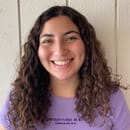On the weekend of November 6th, I attended the So Cal So Close journalism training hosted by Pepperdine University. I was lucky enough because it was hosted at our own Cal Lutheran University campus, which meant that I did not have to waste ANY of the gas in my car! Aside from that, I was really grateful for one of the communication faculty who provided me with knowledge about this event. This event was very informative and full of many giveaways! Now behold, I will now give you a crash course in Journalism!
LEADERSHIP IN THE NEWSROOM
First off, let’s learn about leadership and working with peers in a newsroom! Working with others, especially teammates, requires a sense of responsibility, authority, intelligence, confidence, and charisma. However, those skills only get you so far; you’ll need gentle confrontation, polite persistence, and also aggressive kindness. These are key in solving problems or coming to a consensus within a group, checking in on your teammates, and improving the communication of your newsroom as a whole. Just be careful to not be too intimidating or inconsistent with your emotions, don’t rely too much on others, and make sure you set boundaries both for yourself and your group. The best leaders take care of their people, which helps improve communication. Leaders are in charge of making sure the communication of the group is persistent and well-thought-out. Leaders can do this by having weekly meetings, team-building exercises, and being vulnerable or open with their fellow teammates. Remember, getting published is a reward and a responsibility that should be treated with respect and hard work.
DIVERSITY, EQUITY, AND INCLUSION TOOLS AND STRATEGIES
The newsroom should be a safe place for all. This includes having diversity, inclusion, and equity implemented in their content, newsroom positions, and goals. DEI tools and strategies can include making an effort to get to know your audience and their backgrounds better. You can reach this with surveys and ask for feedback from your audience. Diversity newsroom positions should also be held by a wide variety of diverse people who come from many different racial backgrounds and minorities. To make sure that your stories don’t become repetitive or meet up with newsworthy standards, you can send out a feedback diversity tracker to your audience seeing which stories include certain information that could be important to obtain your credibility on certain topics. Also, removing bias can help engage your audience and diversify your sources creating a really well-written and informative newsworthy piece!
PHOTOJOURNALISM
A photograph in an article can be its own story within itself- it can even enhance the story being written. They say a picture is worth a thousand words, and it can be. Of course, this is with the help of composition, lighting, emotion, and body language. Candid photographs are always great and capture a glimpse of who the person being photographed really is. Good photography comes with a clean background, something never seen before, and different angles applied to the photograph. When photographing someone, always make sure to ask if they are comfortable sharing their age and name. This is so when you go to caption your photographs you’ll know exactly who was in each shot so each person would get the credit and recognition they deserve. Just to be on the safe side, always show your credentials before asking them for their information for your caption. There are a lot of other photography skills to use to help improve your journalism skills, but these scratched the surface just enough to benefit you for now!
CONSCIOUS STYLE
A journalist’s writing has the opportunity to either elevate or tear others down. Journalists need to have a conscious writing style that both influences and helps others grow. Their language is what shapes people’s reality and dictates what’s possible. Modifying your speech is helpful in order to not privilege someone over the other. This means that you need to be conscious about what you write and who you’re writing about. Being politically correct in your writing won’t get you as far as inclusivity being evident in your writing. The majority of your audience (about 70%) don’t know you, so, therefore, you need to give everyone value, welcome them, and show that you care for all groups. Write with empathy because that is the most important to everyone, and it radiates that same energy back to you, the writer.
REVAMPING YOUR EDITING
When it comes to editing articles there are three things to consider: personnel, process, and policy. Personnel refers to who does what and in what order. It also refers to who has the final say and what the reporter’s role is in the editing process. Process explains what order your steps for editing are, and there is a way to double-check that things are going according to plan. Policy connects to what kinds of style decisions are specifically dedicated to your publication, and who is responsible for handling mistakes. The only reason to change someone’s writing as a writer is if you have a really good reason for changing something that they wrote. Being an editor also means being a communicator with your reporter. Editing should be a suggestion or constructive criticism type system where the reporter gains experience and feedback from the editor. However, as an editor, you need to make sure that there are boundaries of when a reporter isn’t a reporter of their story anymore (since you, the editor, has seniority over the reporter). Editing should be a collaborative and helpful process between both the reporter and the editor.
THE IMPORTANCE OF JOURNALISM TO ME
Overall, I was extremely grateful and happy to meet new people interested in journalism, learn new skills I could now implement in a newsroom, and enhance the skills I have already obtained beforehand. I hope that my crash course has done the same for you and that you benefited from this information. You don’t even have to be interested in journalism or a writer to implement and understand these things. This event opened the opportunity for me to be able to see that there are a lot of experiences and programs for young, aspiring journalists like me out there. I learned that there are also a lot of resources to help those interested in journalism and that as long as you have connections in the journalism industry, then you are perfectly fine. That weekend was a true eye-opener to me, and I hope to have more similar opportunities to come or even work in a professional newsroom myself!





